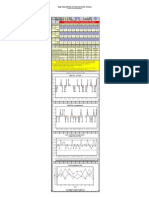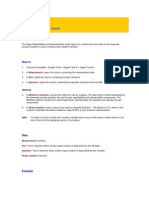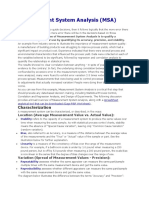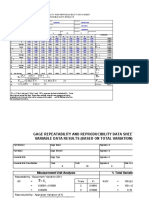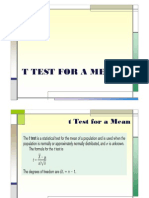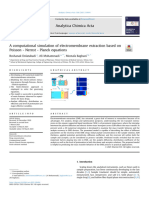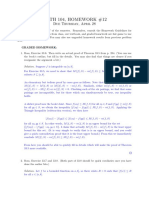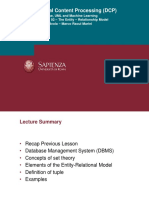0% found this document useful (0 votes)
126 views9 pagesMSA - Range Method - Gage - Studies - Range - Method
The document describes methods for analyzing measurement system variability using a gage R&R study with two appraisers. It provides details on inputting study data, generating plots to visualize appraiser differences, calculating an estimated standard deviation of measurement error, and comparing this error to process specifications or tolerance limits.
Uploaded by
Alberto CataniCopyright
© © All Rights Reserved
We take content rights seriously. If you suspect this is your content, claim it here.
Available Formats
Download as PDF, TXT or read online on Scribd
0% found this document useful (0 votes)
126 views9 pagesMSA - Range Method - Gage - Studies - Range - Method
The document describes methods for analyzing measurement system variability using a gage R&R study with two appraisers. It provides details on inputting study data, generating plots to visualize appraiser differences, calculating an estimated standard deviation of measurement error, and comparing this error to process specifications or tolerance limits.
Uploaded by
Alberto CataniCopyright
© © All Rights Reserved
We take content rights seriously. If you suspect this is your content, claim it here.
Available Formats
Download as PDF, TXT or read online on Scribd
/ 9



